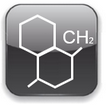SBC
Thermoplastics > Styrenics

SBC Resin | ||||||||
| Saturated styrenic block copolymer | ||||||||
In Mexpolimeros we offer a wide range of SBC polymers and compounds developed according to their needs, ensuring quality products and service. We can provide : custom colors, specific gravity adjustment, antistatic modification and conductivity, flame resistance, resistance to UV, antimicrobial improvements, wear resistant and adhesion of modified substrate for overmolding lubrication. |  | |||||||
| Block copolymer styrene butadiene | ||||||||
SBC (block copolymer styrene-butadiene) also known as styrene-butadiene copolymer (SBC) or Styrene-Butadiene-Styrene (SBS) thermoplastic elastomers, are copolymers of styrene monomer and butadiene rubber, they offer an excellent combination of clarity and toughness of glass moldability in thick and thin sections with chemical resistance and additional durability. The SBC is a copolymerization of styrene-butadiene transparent, and the material has excellent characteristics as high transparency, high resistance to tortuosity, high gloss and stiffness of the surface, high intensity, can be mixed with GPPS in adequate amounts, low proportion and you can reduce costs . It is elastomeric thermoplastic largest volume polymers with similar properties to rubber which can be processed as thermoplastics and have the advantage over conventional types: vulcanization is unnecessary. There are three main types of SBC: Butadiene-styrene copolymer (SBS) block (80%) Styrene isoprene-styrene (SIS) block (11%) SBS and hydrogenated versions SIS (9%), which are styrene ethylene butadiene styrene (SEBS) or styrene-ethylene propylene-styrene (SEPS / SEEPS). SBCs are obtained by anionic polymerization initiated by alkyls litioen aliphatic solvent. Flexibility is the main feature of estatécnica polymerization enables production of elastómerostermoplásticos differentiated by chemical composition, molecular weight and molecular architecture, which may be linear, and star. The composition, molecular weight and structure determines the performance of the product. Styrenic copolymers and mixtures thereof are considered engineering thermoplastics because their properties can be tailored to a wide range of applications with a wide range of processing methods which allow the production of high quality plastic and very durable, suitable for many applications demanding. | ||||||||
Symbols | ||||||||
| | |||||||
| Properties SBC | ||||||||
| ||||||||
| SBC Physical and mechanical properties SBC | ||||||||
The styrenic block copolymers are saturated thermoplastic elastomers, they are the member of "added value" of the family of styrenic block copolymers. Exhibit a higher modulus of traction and exhibit a less dramatic loss of tensile properties at elevated temperatures. SBC, e s a robust material is known for its clarity and glass appearance, strength against impact and wide range of colors. The stress-strain behavior is more like thermoset rubber any other TPE. Its dynamic hysteresis also more like thermoset rubber than any other TPE. B has a aha compression and hardness range generally lower than other TPE.This is a crystal material excellent mechanical, impact resistant and high gloss properties. contains no biphenol, it is odorless and 100% recyclable. | ||||||||
SBC Thermal properties | ||||||||
| It has excellent thermal stability which reduces blistering. At room temperature, the styrenic block copolymers (SBC) are more "rubber - like" than any other thermoplastic elastomer. The temperature limit of low upper service actually has a service temperature range from -45 ° C to 110 ° C. Below the glass transition temperature of polystyrene, the SBC act as vulcanized rubber, while above this temperature, act as thermoplastics. | ||||||||
| SBC Electrical properties | ||||||||
SBCs are typically good insulators with high relative electrical resistivity being nonpolar polar best. However, the electrical properties of the compounds of SBC are more dependent on the ingredients used in the mixture of the elastomer base. It is not possible to make a clear distinction between insulating elastomer, antistatic and drivers. SBS usually having a resistivity below 10² Ohms are considered conductors; between 10¹³ and 10² Ohms, antistatics; and above 10¹³ Ohms, insulators. | ||||||||
| SBC Optical properties | ||||||||
| SBC is known for its unique combination of sparkling clear, high transparency, impact resistance, rigidity and exceptional brilliance. | ||||||||
| SBC Chemical resistance | ||||||||
The styrenic block copolymers are saturated member of "added value" of the family of styrenic block copolymers. Superior oxidation and UV radiation compared to styrenic block copolymers exhibit better unsaturated oxygen, ozone and unsaturated versions general chemical resistance resistance. All SBC thermoplastics have good chemical resistance to water, acids and bases, and polar solvents, but little resistance to oils, fuels and hydrocarbon - based solvents, but are p Obre oil resistance. | ||||||||
| SBC Polimerization | ||||||||
The SBC is produced by anionically catalyzed polymerization techniques. They are composed of polystyrene blocks and polydiolefin well defined. There may be two basic types of configurations: linear and branched (star). The polystyrene blocks and polydiene are chemically incompatible and therefore a two - phase system is formed. The domains bind to polystyrene hard phase polydiene rubber and act as multifunctional crosslinks.Three main synthetic methods are employed. In the two - stage polymerization, the diblock copolymer styrene-butadiene living becomes a linear triblock SBCs copolymer by subsequent addition of a difunctional coupling agent, whose amount can vary for different yields polymers coupled SBS and SB uncoupled. Finally, we must add a terminating agent to terminate the active chain ends. Chemical residues of termination reactions or coupling must be inactive to the antioxidant to prevent the yellowing of SBC copolymer. |  | |||||||
| SBC Processability | ||||||||
SBC granules have excellent moldability, and is a transparent resin of high performance that is well suited for various molding methods including injection molding and extrusion (for the formation of films and sheets), blow molding, molding inflation, profile extrusion, etc. SBC resin, alone or mixed with general purpose polystyrene can be extruded in sheet and thermoforming in conventional equipment. Applications cover the entire spectrum of t ECHNICAL conventional processing. These materials processed in the same way standard processes are processes molding injection well, providing good cycle times and design flexibility , injection blow molding , and blowing applications.not because they absorb moisture, SBC pellets usually does not require drying. However, they can retain sufficient surface moisture to require drying when stored in open containers under wet conditions. | ||||||||
| SBC Compound | ||||||||
 | ||||||||
| SBC Applications | ||||||||
Its wide variety of uses includes: shrink films, sheets of food packaging, packaging materials for electronic components, sheets of packaging material for producing blister packs, ampoules, caps cosmetics, toys, miscellaneous items, screens , f retractable ilm, s YSTEMS floors, sporting goods, industrial products and food packaging, industry and medical components and whole boxes, decorative and consumer goods devices , plugs, hooks, t apas cosmetic, p transparent erchas and bottles . | ||||||||
